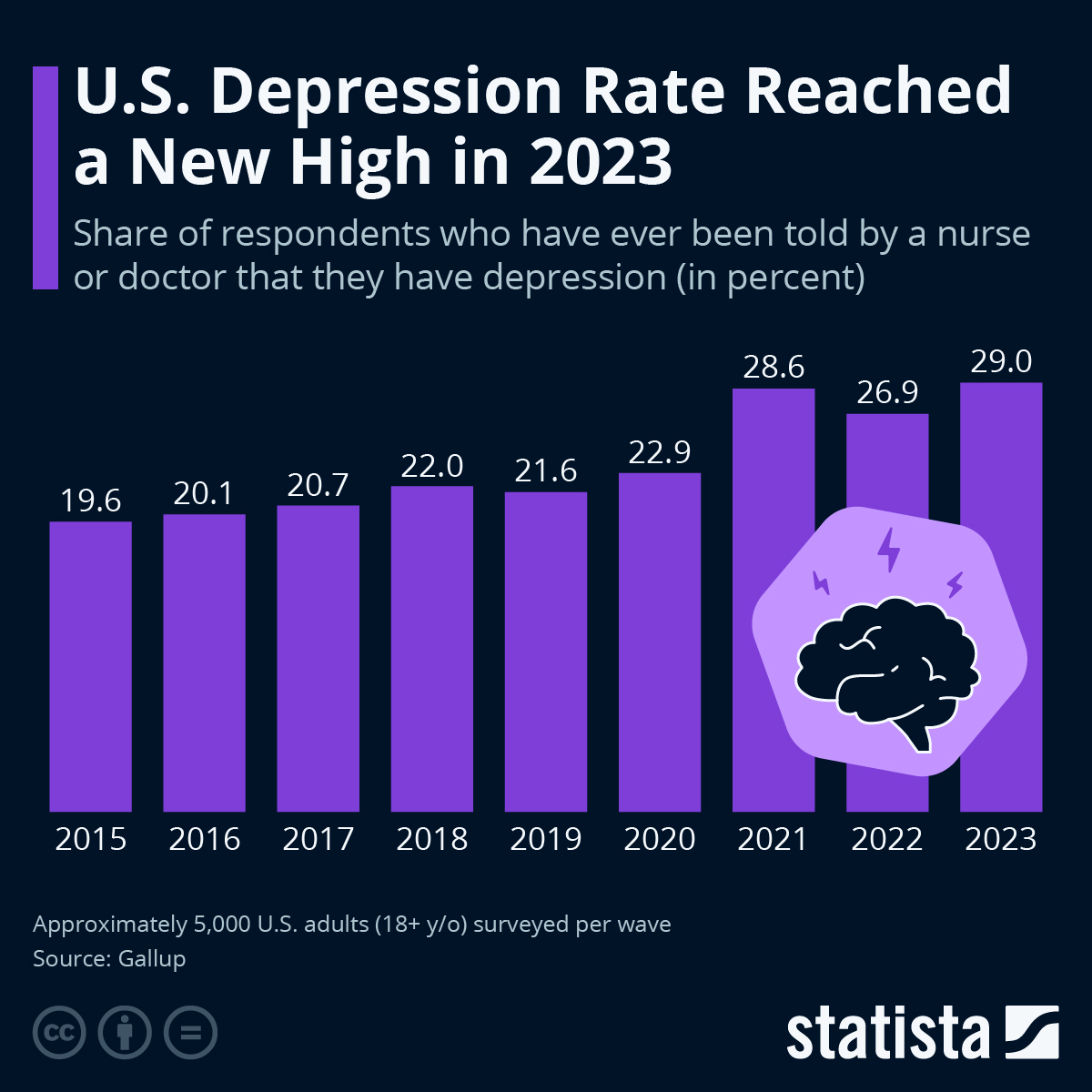
According to survey data, three in ten people in the United States had been clinically diagnosed with depression at a point in their lives in 2023.
As Statista's Anna Fleck points out in the chart below, this is the highest rate since the question started being asked, up 10.6 percentage points from 2015. The rate of increase was particularly steep in the first year of the pandemic, jumping up from 22.9 percent in 2020 to 28.6 percent in 2021. Meanwhile, 17.8 percent of respondents said that they currently had depression in 2023.
You will find more infographics at Statista
These averages hide figures even more extreme, as Gallup data reveals how rates among women, young adults, as well as Black and Hispanic respondents have risen particularly fast.
According to the survey, 36.7 percent of women report having been diagnosed with depression in their lifetimes versus 20.4 percent of men. For young people aged 18-29, 34.3 percent had been diagnosed with depression, while for 30-44 year olds it was 34.9 percent. Lifetime depression rates among Black and Hispanic adults have now surpassed those of White respondents.
According to the U.S. Centers for Disease Control and Prevention data, 18.4 percent of U.S. adults reported having been diagnosed with depression at some point in their lives. Again, this figure hides disparities, with the CDC data similarly finding that depression prevalence was higher among women (24 percent) than men (13.3 percent).
According to survey data, three in ten people in the United States had been clinically diagnosed with depression at a point in their lives in 2023.
As Statista’s Anna Fleck points out in the chart below, this is the highest rate since the question started being asked, up 10.6 percentage points from 2015. The rate of increase was particularly steep in the first year of the pandemic, jumping up from 22.9 percent in 2020 to 28.6 percent in 2021. Meanwhile, 17.8 percent of respondents said that they currently had depression in 2023.
You will find more infographics at Statista
These averages hide figures even more extreme, as Gallup data reveals how rates among women, young adults, as well as Black and Hispanic respondents have risen particularly fast.
According to the survey, 36.7 percent of women report having been diagnosed with depression in their lifetimes versus 20.4 percent of men. For young people aged 18-29, 34.3 percent had been diagnosed with depression, while for 30-44 year olds it was 34.9 percent. Lifetime depression rates among Black and Hispanic adults have now surpassed those of White respondents.
According to the U.S. Centers for Disease Control and Prevention data, 18.4 percent of U.S. adults reported having been diagnosed with depression at some point in their lives. Again, this figure hides disparities, with the CDC data similarly finding that depression prevalence was higher among women (24 percent) than men (13.3 percent).
Loading…





